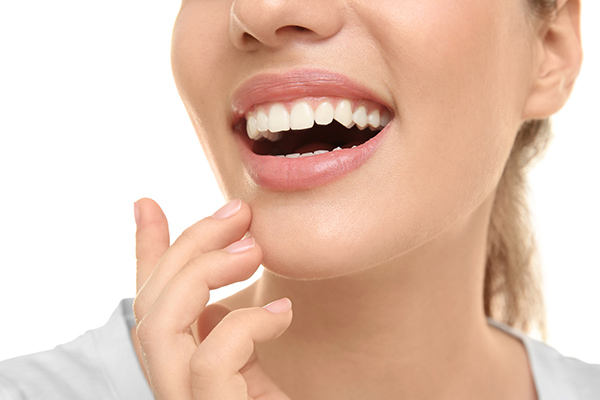Dental bonding, a versatile and widely used dental procedure, is pivotal in general, restorative, and cosmetic dentistry. By harnessing advanced materials and techniques, dental bonding effectively addresses a range of oral health concerns, from repairing damaged teeth to enhancing aesthetic appeal. As a conservative, cost-effective, and natural-looking solution, dental bonding has become an essential tool in modern dentistry, offering patients optimal oral health outcomes and rejuvenated smiles.
What is dental bonding?
Dental bonding, also known as tooth bonding, is a dental procedure where a tooth-colored resin material is applied to a tooth and hardened with a specialized light, effectively bonding the material to the tooth. This procedure restores the tooth’s natural shape, appearance, and function, addressing various oral health concerns such as decay, chips, cracks, gaps, and discoloration.
Dental bonding is a minimally invasive and conservative technique that requires minimal tooth preparation, making it an attractive option for patients seeking to repair or enhance their teeth without extensive dental work.
Types of dental bonding
- Direct Bonding: A single-visit procedure where the dentist applies the bonding material directly to the tooth.
- Indirect Bonding: A two-visit procedure where the dentist creates a model of the tooth and fabricates the bonding material outside the mouth.
Applications in general dentistry
- Fillings: Bonding is used to fill cavities, restoring teeth damaged by decay.
- Chipped Teeth: Bonding repairs minor chips and cracks.
- Gum Recession: Bonding helps protect exposed roots.
Applications in Restorative Dentistry
- Tooth Reconstruction: Bonding rebuilds damaged or broken teeth.
- Dental Bridges: Bonding secures bridges to adjacent teeth.
- Dental Implants: Bonding attaches implant-supported restorations.
Applications in Cosmetic Dentistry
- Teeth Whitening: Bonding enhances tooth color and appearance.
- Tooth Reshaping: Bonding reshapes teeth to improve aesthetics.
- Gapped Teeth: Bonding closes gaps between teeth.

What are the benefits of dental bonding?
Dental bonding offers the following benefits:
Clinical Benefits
- Conservative: Preserves natural tooth structure.
- Effective: Repairs damaged teeth and restores function.
- Long-Lasting: Can last up to 10 years with proper care.
- Versatile: Suitable for various dental restorations.
Aesthetic Benefits
- Natural-Looking: Blends with surrounding teeth.
- Enhances Smile: Improves tooth color and shape.
- Boosts Confidence: Restores self-esteem.
Practical Benefits
- Cost-Effective: Less expensive than alternative procedures.
- Quick Procedure: Typically completed in one visit.
- Minimally Invasive: Requires minimal tooth preparation.
- Painless: Usually performed without anesthesia.
Patient Benefits
- Improved Oral Health: Restores tooth function and prevents further damage.
- Increased Comfort: Relieves tooth sensitivity and discomfort.
- Enhanced Appearance: Improves self-confidence and overall quality of life.
- Easy Maintenance: Simple to clean and maintain.
Other Benefits
- Reversible: Can be reversed if needed.
- Compatible: Compatible with dental implants and orthodontics.
- Low Risk: Low risk of complications.
- Insurable: Often covered by dental insurance.
What are the recent advances in dental bonding?
Recent advances in dental bonding include:
Materials
- Nano-composite resins: Improved mechanical properties and aesthetics.
- Bioactive composites: Release antimicrobial agents to prevent secondary caries.
- Self-etching adhesives: Simplified bonding process and reduced sensitivity.
- Universal adhesives: Compatible with various surface treatments.
Technologies
- Digital dentistry: CAD/CAM systems for precise bonding.
- 3D printing: Customized bonding templates and models.
- Laser bonding: Enhanced bonding strength and durability.
- Ultrasonic bonding: Improved bonding efficiency.
Techniques
- Minimal intervention dentistry: Conservative bonding approaches.
- Bulk-fill composites: Efficient and effective restorations.
- Layering techniques: Optimal aesthetics and durability.
- Self-etching and selective etching: Optimized bonding protocols.
Research and Development
- Bioactive materials and surfaces.
- Nanotechnology and nanostructured materials.
- 3D printing and digital dentistry advancements.
- Bonding agents with antimicrobial properties.
Future Directions
- Personalized dentistry through genomics and proteomics.
- Bioinspired materials and surfaces.
- Advanced digital dentistry and robotics.
- Minimally invasive and pain-free bonding procedures.
Bottom line
Dental bonding has revolutionized the field of dentistry, offering a versatile, effective, and conservative solution for various oral health concerns. By harnessing advanced materials and techniques, dental bonding restores damaged teeth, enhances aesthetics, and improves overall oral function. With its numerous benefits, including minimal invasiveness, cost-effectiveness, and natural-looking results, dental bonding has become an essential tool in modern dentistry.

